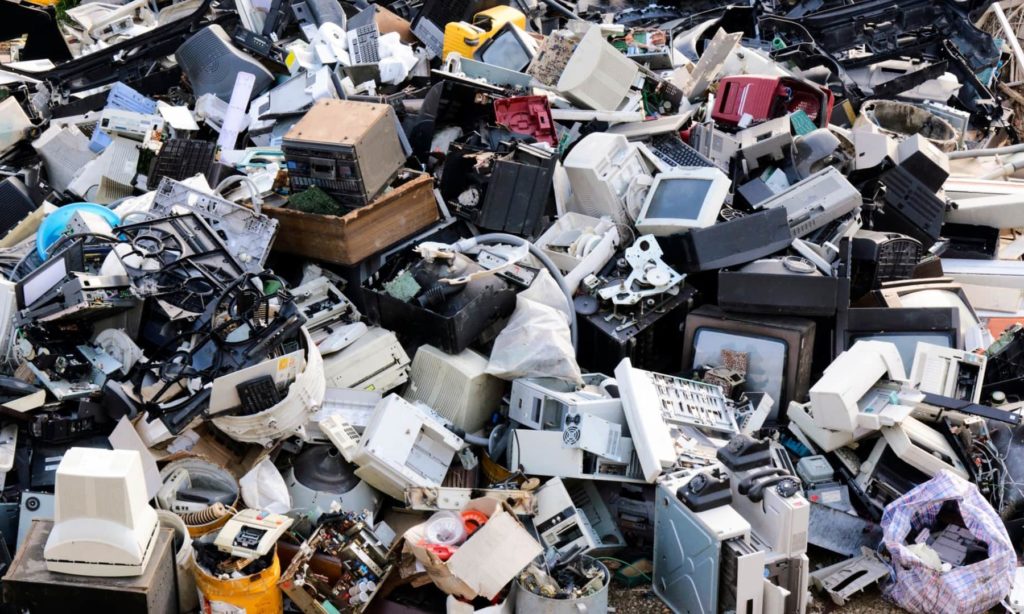The World’s E-Waste Has Reached a Crisis Point

By Faridat Salifu
A recent UN report reveals that the world is generating 137 billion pounds of electronic waste annually, yet recycling less than a quarter of it.
This surge in e-waste comprising everything from TVs and smartphones to refrigerators and electric toothbrushes is becoming a full-blown environmental and health crisis.
As global consumerism spreads, e-waste, known as electrical and electronic equipment (EEE), has spiraled out of control. High-income countries average 109 EEE devices per person, while low-income nations have only four.
In 2022 alone, humanity produced over 137 billion pounds of e-waste, roughly 17 pounds per person, but recycled less than a quarter. This waste contains an estimated $62 billion worth of recoverable materials like iron, copper, and gold, much of which ends up in landfills.
Kees Baldé, a senior scientific specialist at the United Nations Institute for Training and Research and lead author of the report, highlights the alarming speed of e-waste growth, outpacing the rate of proper collection and recycling. “We consume too much and dispose of things too quickly,” Baldé says. “Products are not designed for repair.”
Improperly processed e-waste releases hazardous materials like cobalt, flame retardants, and lead, which can severely impact both human health and the environment.
The report notes that annually, over 125,000 pounds of mercury from e-waste enter ecosystems, endangering wildlife and human communities.
Vanessa Gray, head of the Environment and Emergency Telecommunications Division at the UN’s International Telecommunication Union, emphasizes the dual nature of e-waste: valuable yet toxic.
Recycling e-waste is particularly dangerous in low- and middle-income countries, where informal recyclers often lack proper safety equipment.
These workers, who extract valuable metals by melting components, are exposed to harmful toxins. In 2022, about 7.3 billion pounds of e-waste were shipped uncontrolled globally, with high-income countries exporting 1.8 billion pounds to less-equipped nations.
The economic toll of e-waste mismanagement is substantial. Although high-income countries have formal recycling facilities, global efforts fall short. Europe leads with a 43 percent recycling rate, but overall, recycling processes lag behind the increasing waste.
In 2022, even the limited recycling that occurred avoided the mining of 2 trillion pounds of ore, reducing greenhouse gases and preserving biodiversity.
To address the crisis, the report advocates for increased recycling rates and better waste management practices.
However, the complexity of e-waste, with its diverse and often hazardous components, makes processing expensive. Baldé notes the necessity of legislative support for sustainable e-waste management.
Currently, 81 countries have e-waste policies, with 67 incorporating extended producer responsibility (EPR), which involves fees paid by manufacturers to fund e-waste management.
Additionally, right-to-repair advocates, like Elizabeth Chamberlain from iFixit, stress the importance of allowing consumers to repair their devices. “Repair is a harm-reduction strategy,” Chamberlain says, advocating for access to parts and documentation to extend product lifespans.
Ultimately, the root of the e-waste problem lies in demand. A growing population requires reliable devices, but also the ability to repair them. High-quality, durable products, combined with robust recycling systems, are essential. “We consume so much,” Baldé concludes, “that we cannot simply recycle our way out of this problem.”
The urgency to manage e-waste sustainably is clear, with coordinated efforts needed to mitigate its environmental and health impacts and ensure a more sustainable future.
